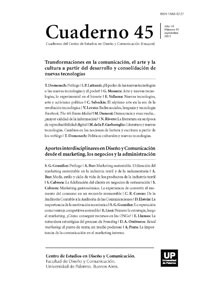¿El poder de las nuevas tecnologías o las nuevas tecnologías y el poder?
Abstract
The development and the spread of “new technologies” of information and communication, has been the category of virtuality (user experience through a technological means by which constructs a reality without material existence) as part of our everyday life. If modernity was the time of the rational world experience, postmodernity poses an experience where phenomenal reality and virtual experience live togheter and mixed. An experience of virtual reality built halfway between reality and illusion. Neither is entirely illusory nor emerges from the world phenomenal experience. Half way between the objective and subjective. It comes from of our subjective experience but tends to objectify while it builds effects on life. This leads us to think also in the category of a virtual subject. A subject that is not fully configured as real but acquires an identity (however fleeting it is) and that demands a life. This generates a new category of subject and subjectivity that is part of the emergence of a new historical era (late capitalism). A man
who is pure representation and whose most outstanding feature is its very absence. And just as one can speak of a virtual subject it becomes possible to think that one of the signs of our times is the existence of virtual power (a king without a body) whose condition occurs between the flow of communication networks. A power without a center or materiality. A faceless power, as invisible as present.
References
Benjamín, W. (1973). La obra de arte en la era de su reproductibilidad técnica, en Discursos Interrumpidos I. Madrid. Taurus Ediciones.
Danto, A. (2003). Después del fin del arte. Paidós: Barcelona.
Deleuze, G. (1999). Conversaciones, 1972-1990. Pretextos: Valencia.
Oliveras, E. (2006). Estética. La cuestión del arte. Grupo Editorial Planeta: Buenos Aires.
Žizek, S. (2006). Visión de paralaje. Fondo de Cultura Económica: Buenos Aires.
Los autores/as que publiquen en esta revista ceden los derechos de autor y de publicación a "Cuadernos del Centro de Estudios de Diseño y Comunicación", Aceptando el registro de su trabajo bajo una licencia de atribución de Creative Commons, que permite a terceros utilizar lo publicado siempre que de el crédito pertinente a los autores y a esta revista.


